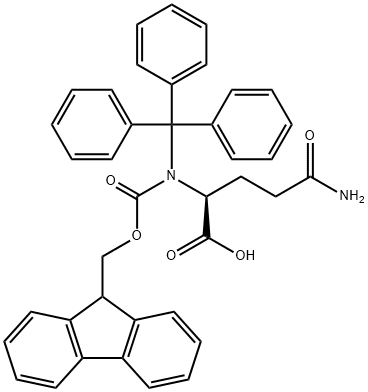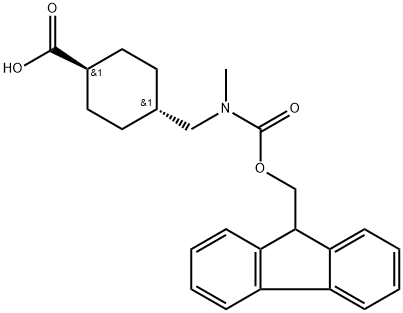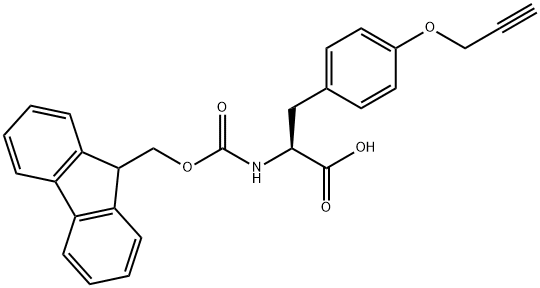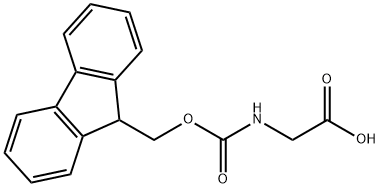Fmoc-Asn(Trt)-OH
Synonym(s):Nα-(9-Fluorenylmethoxycarbonyl)-Nγ-trityl-L -asparagine;Nα-Fmoc-Nγ-trityl-L -asparagine;FMOC-Asn(Trt)-OH;N-α-Fmoc-N-β-trityl-L-asparagine
- CAS NO.:132388-59-1
- Empirical Formula: C38H32N2O5
- Molecular Weight: 596.67
- MDL number: MFCD00077049
- SAFETY DATA SHEET (SDS)
- Update Date: 2025-07-14 15:27:00

What is Fmoc-Asn(Trt)-OH?
Description
Fmoc-Asn(Trt)-OH prevents the possibility of the amide side chain from undergoing dehydration side reactions during activation, especially with carbodiimide reagents. Fmoc-Asn(Trt)-OH dissolves readily in all standard peptide synthesis reagents, while Fmoc-Asn-OH is only somewhat soluble in NMP or DMF. The trityl group is removed with TFA. This reaction is usually complete within 1 hour at room temperature, but is slower when the Asn(Trt) residue in at the N-terminal of the peptide. In these cases, the deprotection reaction should be extended to 2 hours.
Chemical properties
white crystal powde
The Uses of Fmoc-Asn(Trt)-OH
Fmoc-Asn(Trt)-OH, is an amino acid derivative used in chemical synthesis and peptide chemistry.
Preparation
Synthesis of Fmoc-Asn(Trt)-OH:
Step 1: Crystallization to form N'-Trityl-L-asparagine crystals.
Step 2: Centrifugation to extract N'-Trityl-L-asparagine crystals.
Step 3: Washing to remove residual starting materials in the synthesis.
Step 4: Extraction to obtain N-Acetyl-L-asparagine.
Step 5: Centrifugation to extract N'-Trityl-L-asparagine.
Step 6: Drying to obtain the final product.
This synthesis method effectively removes residual synthetic materials such as trifluoroacetic acid, maleic anhydride, and epichlorohydrin, which are similar in chemical properties to N-Acetyl-L-asparagine, from the product during the production process. The purification method is simple and the product obtained has high purity.
Properties of Fmoc-Asn(Trt)-OH
| Melting point: | 201-204 °C(lit.) |
| Boiling point: | 858.1±65.0 °C(Predicted) |
| alpha | -16 º (c=1, MeOH) |
| Density | 1.271±0.06 g/cm3(Predicted) |
| refractive index | -19 ° (C=1, DMF) |
| storage temp. | 2-8°C |
| solubility | <0.00005g/l |
| form | powder to crystal |
| pka | 3.79±0.10(Predicted) |
| color | White to Almost white |
| optical activity | [α]20/D 15.0±1°, c = 1% in methanol |
| BRN | 4343823 |
| CAS DataBase Reference | 132388-59-1(CAS DataBase Reference) |
Safety information for Fmoc-Asn(Trt)-OH
| Signal word | Warning |
| Pictogram(s) |
 Environment GHS09 |
| GHS Hazard Statements |
H411:Hazardous to the aquatic environment, long-term hazard |
| Precautionary Statement Codes |
P273:Avoid release to the environment. P391:Collect spillage. Hazardous to the aquatic environment P501:Dispose of contents/container to..… |
Computed Descriptors for Fmoc-Asn(Trt)-OH
| InChIKey | KJYAFJQCGPUXJY-UUWRZZSWSA-N |
| SMILES | C(O)(=O)[C@H](CC(N)=O)N(C(OCC1C2=C(C=CC=C2)C2=C1C=CC=C2)=O)C(C1=CC=CC=C1)(C1=CC=CC=C1)C1=CC=CC=C1 |
Fmoc-Asn(Trt)-OH manufacturer
New Products
Indole Methyl Resin tert-butyl 9-methoxy-3-azaspiro[5.5]undecane-3-carboxylate Boc-His(Boc)-OH 2-CTC Resin 4-Chloro-7-tosy1-7Hpyrrolo[2,3-d]pyrimidine 5,7-Dibromo-1H-indole 2,5-dichloro-N-hydroxy-4,6-dimethylpyridine-3-carboximidamide 2,2-Dimethoxy-7-azaspiro[3.5]nonane hydrochloride 4-chloromethyl-5-methyl-1,3-dioxol-2-one (DMDO-Cl) R-2-BENZYLOXY PROPIONIC ACID 1,1’-CARBONYLDIIMIDAZOLE 1,1’-CARBONYLDI (1,2-4 TRIAZOLE) N-METHYL INDAZOLE-3-CARBOXYLIC ACID 4-((2-hydroxyethyl)thio)benzoic acid 1-(TERT-BUTOXYCARBONYL)-2-PYRROLIDINONE Methyl 6-methylnicotinate 3-Pyridineacrylic acid tert-Butyl carbazate TETRAHYDRO-2H-PYRAN-3-OL 2-((4-morpholinophenylamino) (methylthio) methylene) malononitrile 3-(4-morpholinophenylamino)-5-amino-1H-pyrazole-4-carbonitrile 2,4-dihydroxybenzaldehyde 1,3-Diethyl-1,3-Diphenylurea Methyl 2-methylquinoline-6-carboxylateRelated products of tetrahydrofuran








You may like
-
 132388-59-1 99%View Details
132388-59-1 99%View Details
132388-59-1 -
 Fmoc-Asn(Trt)-OH, ≥97% CAS 132388-59-1View Details
Fmoc-Asn(Trt)-OH, ≥97% CAS 132388-59-1View Details
132388-59-1 -
![Nα-[(9H-Fluoren-9-ylmethoxy)carbonyl]-Nγ-trityl-L-asparagine CAS 132388-59-1](https://img.chemicalbook.in//Content/image/CP5.jpg) Nα-[(9H-Fluoren-9-ylmethoxy)carbonyl]-Nγ-trityl-L-asparagine CAS 132388-59-1View Details
Nα-[(9H-Fluoren-9-ylmethoxy)carbonyl]-Nγ-trityl-L-asparagine CAS 132388-59-1View Details
132388-59-1 -
 Fmoc-Asn(Trt)-OH CAS 132388-59-1View Details
Fmoc-Asn(Trt)-OH CAS 132388-59-1View Details
132388-59-1 -
 FMOC-Asn(Trt)-OH CAS 132388-59-1View Details
FMOC-Asn(Trt)-OH CAS 132388-59-1View Details
132388-59-1 -
 Fmoc-L-Asn(Trt)-OH , CAS No 132388-59-1View Details
Fmoc-L-Asn(Trt)-OH , CAS No 132388-59-1View Details
132388-59-1 -
 Pyridine 99.5% HPLC /UV SpectroscopyView Details
Pyridine 99.5% HPLC /UV SpectroscopyView Details
110-86-1 -
 Thiourea 99% ARView Details
Thiourea 99% ARView Details
62-56-6
